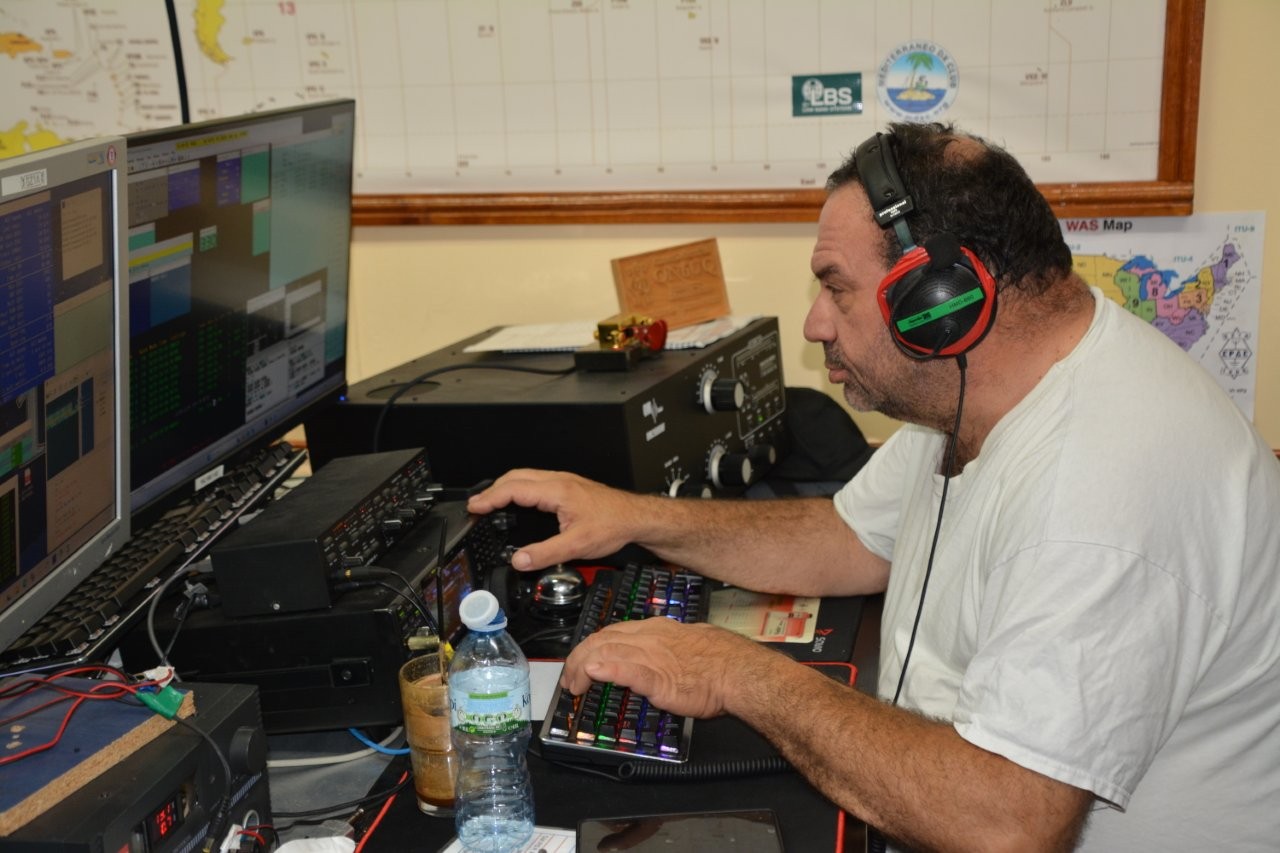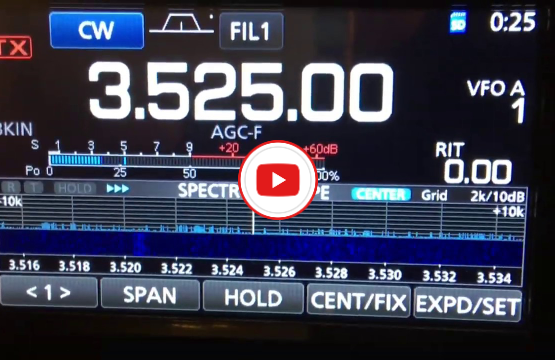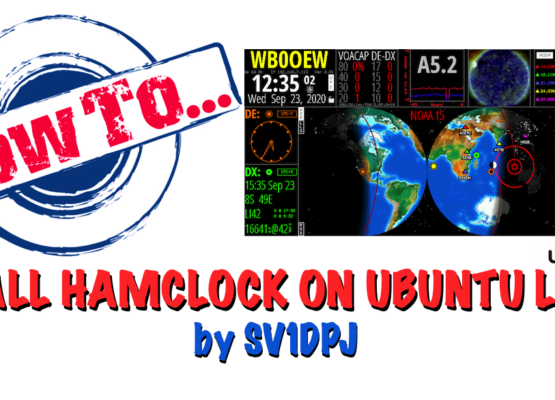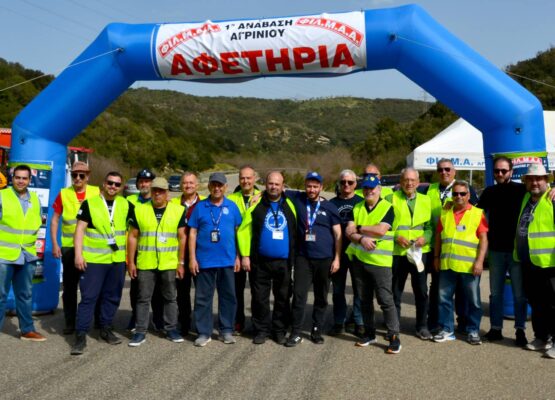From CQ WW to Makrothen: An Idea That Became Reality
After achieving an excellent score in the CQ WW RTTY contest during the last weekend of September, a conversation with Nikos SV3SCW about entering more upcoming RTTY contests sparked the idea: why not participate in the Makrothen RTTY Contest on the weekend of October 11 to 12?
During CQ WW, the station performed flawlessly. The antennas worked very well, especially the 80 meter vertical, and propagation on the higher bands, particularly 10 meters, was still strong. With a quick assessment of the station’s capabilities combined with the expected competition from other stations, it seemed clear that SZ1A had the potential for a top world ranking, regardless of the category we entered.
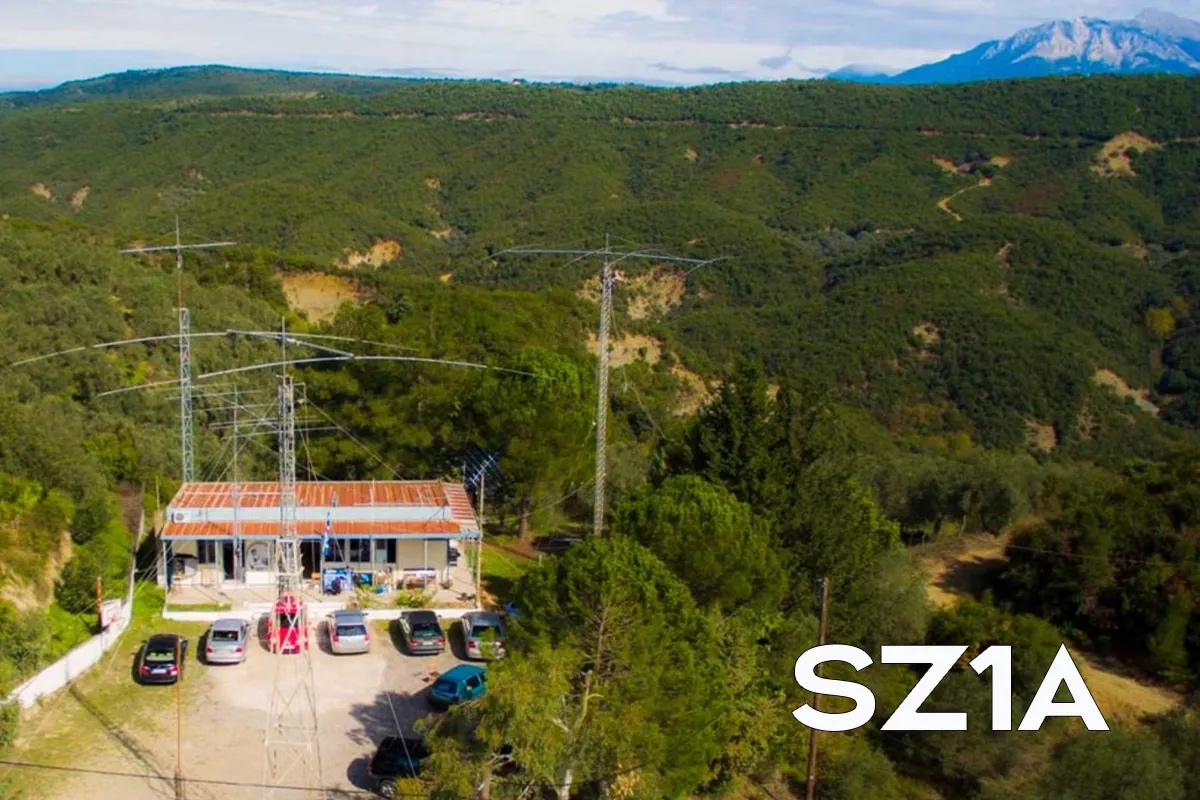
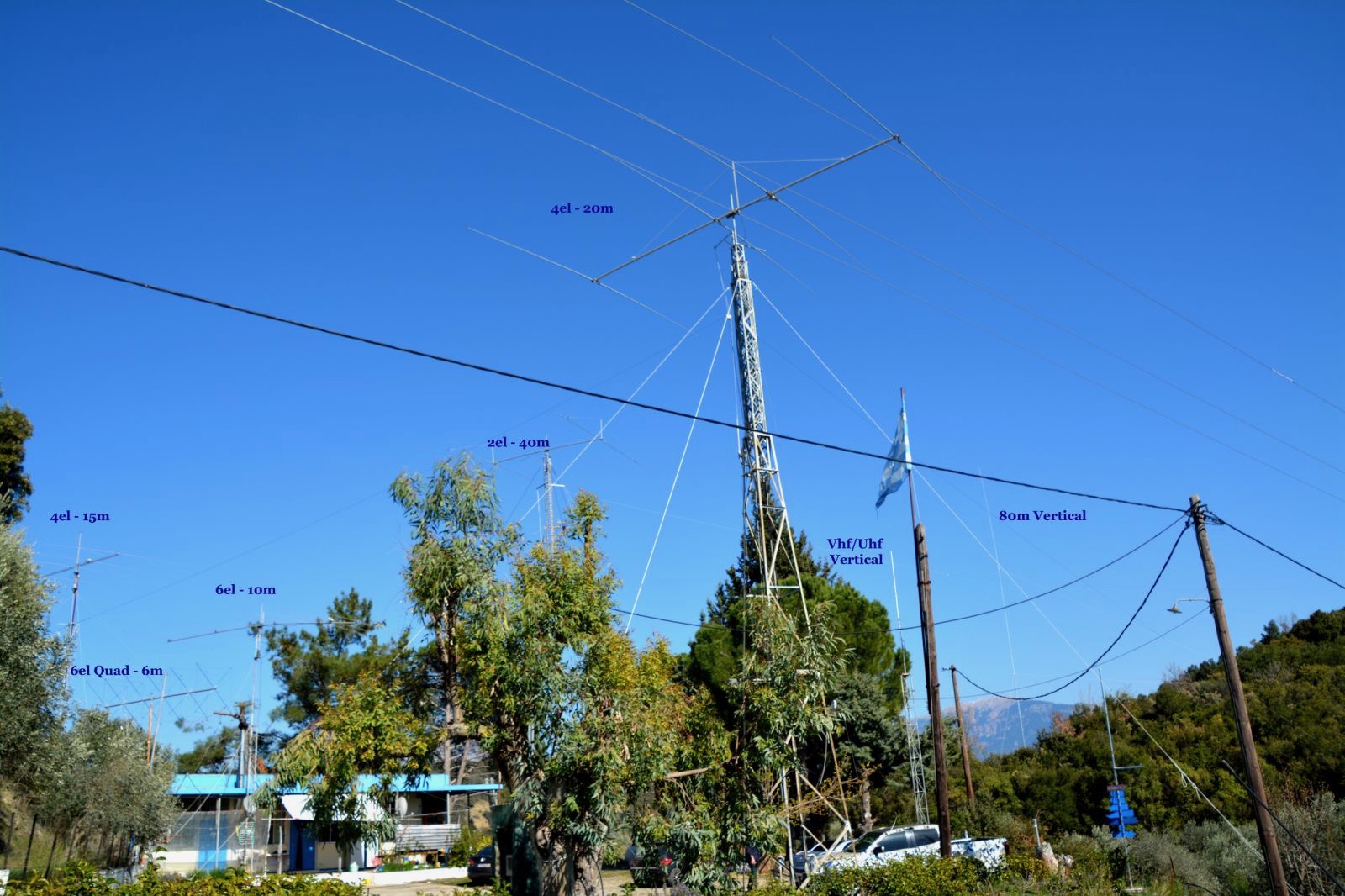
A Brief Detour: The History of Amateur Radio Contests
Let me take a short detour to explain a few things about amateur radio contests. Most Contests were created many years ago to promote a specific award of a national association or a magazine-club.
For example, the ARRL organizes the ARRL DX contest. In it, American operators chase DX stations for the DXCC Award, while stations outside the United States hunt contacts in US states for the WAS Award.
Similarly, several large national associations run their own contests, such as Japan’s JARL or Germany’s DARC.
In 1947, a group of American amateur radio operators split from the ARRL due to disagreements with what they saw as an old-fashioned leadership and its approach to promoting the hobby, awards, and contests.
This division led to the creation of CQ Magazine.
Over time, contests developed dedicated followings and strengthened the competitive side of the hobby.
CQ’s contests quickly became the most popular in the amateur radio world because they were the first to apply the rule “everyone against everyone”, without separating participants the way ARRL and other national associations did.
Contesters constantly pushed to break previous records. At first, this meant building huge “super-stations” with massive antenna arrays like Frank Donovan W3LPL or the famous Russian club station UZ9CWA from the 1990s.
With the advancement of computers and microelectronics, new techniques such as SO2R and in-band operating emerged, pushing contesting to its limits without breaking any rules. Specialized automation systems were also created to support contest operations.
Today, these techniques and tools are an integral part of top-ranked stations, combined with good station location and strong antenna systems.
The CQWW contest (now organized by the World Wide Radio Operators Foundation) uses a very simple scoring method, which tends to favor stations located in North Africa and the northern parts of Latin America, such as CN, EA8, or P4. Because of Greece’s geographic position at the southeastern edge of Europe, it is nearly impossible for a Greek station, no matter how good its antennas are, to match the performance of equally equipped stations in Britain or Spain. Stations in those countries are at least 2,000 kilometers closer to North America, giving them significantly more propagation time on every band towards North America.
This concludes the detour and we return to the main story.
The Makrothen Contest: A Fair Competition for Everyone
The Makrothen Contest was created relatively recently in 2015 by the Pizza Lovers 259 contest club in California, known as PL259. It does not promote a specific award, but in my opinion it offers the fairest scoring method for contacts. The exchange consists of the first four characters of the QTH Locator, and the points you earn depend solely on the distance between the two stations. There are no favored continents or countries.
The Makrothen Contest…in my opinion offers the fairest scoring method for contacts.
Another important difference in this contest is the absence of multipliers from scoring.
The three required eight hour operating periods ensure operators get real rest between sessions.
The combination of the scoring method and the structured eight-hour operating periods creates an excellent opportunity to evaluate both the performance of your station and your own skills as an operator.
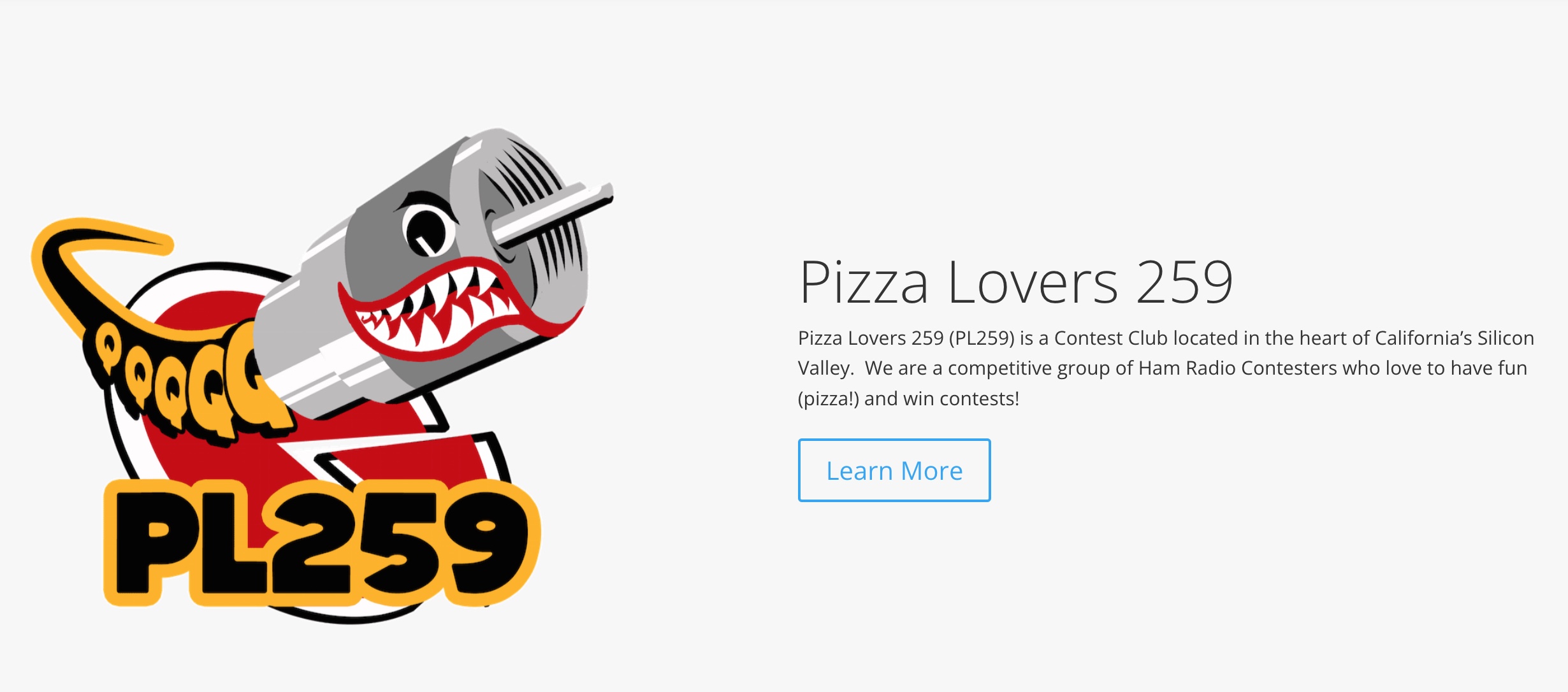
SZ1A’s Participation and the Road to Victory
The operators who finally signed up to participate were Vasilis SV1DPJ and the author, SV1BDO. During the second operating period, Kostas SV1DPI also joined us for a few hours and provided valuable help.
We decided to enter Category 6, which is Multi Operator, Single Transmitter, High Power. Each of us would operate one four hour shift during every eight hour period.
Since the rules give a point bonus multiple of 1.5 times for contacts on 40 meters and 2 times for contacts on 80 meters, we planned to focus on these two bands whenever propagation allowed, in order to collect as many points as possible.
The contest began at 0000 UTC on Saturday, with me taking the first four hour shift.
Propagation on 40 meters was quite good, with many stations on the band from both Europe and North America. On 80 meters, activity was lower, so the QSO rate there remained modest.
At 0400 UTC, Vasilis SV1DPJ took over, working 40 and 80 meters until 0520 UTC, when the 20 meter band opened.
He then moved to 15 and 10 meters, and the first eight hour period closed with 344 contacts in the log.
We then had the required eight hour break, and we were back at the radio on Saturday at 1600 UTC, this time starting on 10 meters.
Propagation toward North America was excellent on both 10 and 15 meters, and to avoid losing possible contacts on 21 MHz, we switched bands every 45 to 60 minutes for almost three hours before moving to 20 meters.
Night had fallen by then, and the higher bands no longer had activity, so our focus shifted to the lower bands.
We cycled through 20, 40, and 80 meters, keeping one eye on the radio and the other on the DX Cluster so that we could chase anything interesting that appeared on another band.
The second eight-hour session ended at 2400 UTC on Saturday with 678 contacts recorded.
At last, we managed to get some sleep to recover our strength before continuing on Sunday morning for the third and final operating period.
Anyone who has visited SZ1A and stayed overnight knows what it feels like to enjoy a Sunday morning coffee while looking out over the slopes of Kokkinologos (Red Forest) and taking in the calm and beauty of the landscape.
Anyone who has visited SZ1A and stayed overnight knows what it feels like to enjoy a Sunday morning coffee while looking out over the slopes of Kokkinologos (Red Forest) and taking in the calm and beauty of the landscape.
However, the peaceful atmosphere had to be interrupted for the operators, because the third period began at 0800 UTC, and we needed to be ready for the final push.
The 20 meter band was full of European stations and the QSO rate stayed consistently high for about three hours, until 1100 UTC.
We kept switching through the higher bands and applied the Search and Pounce (S&P) tactic, meaning we chased stations that called CQ instead of calling CQ ourselves. This kept our hourly rate steady.
This tactic pays off especially during the last hours of a contest. You can quickly find stations you have not logged yet, either through the Cluster or by sweeping the band up and down.
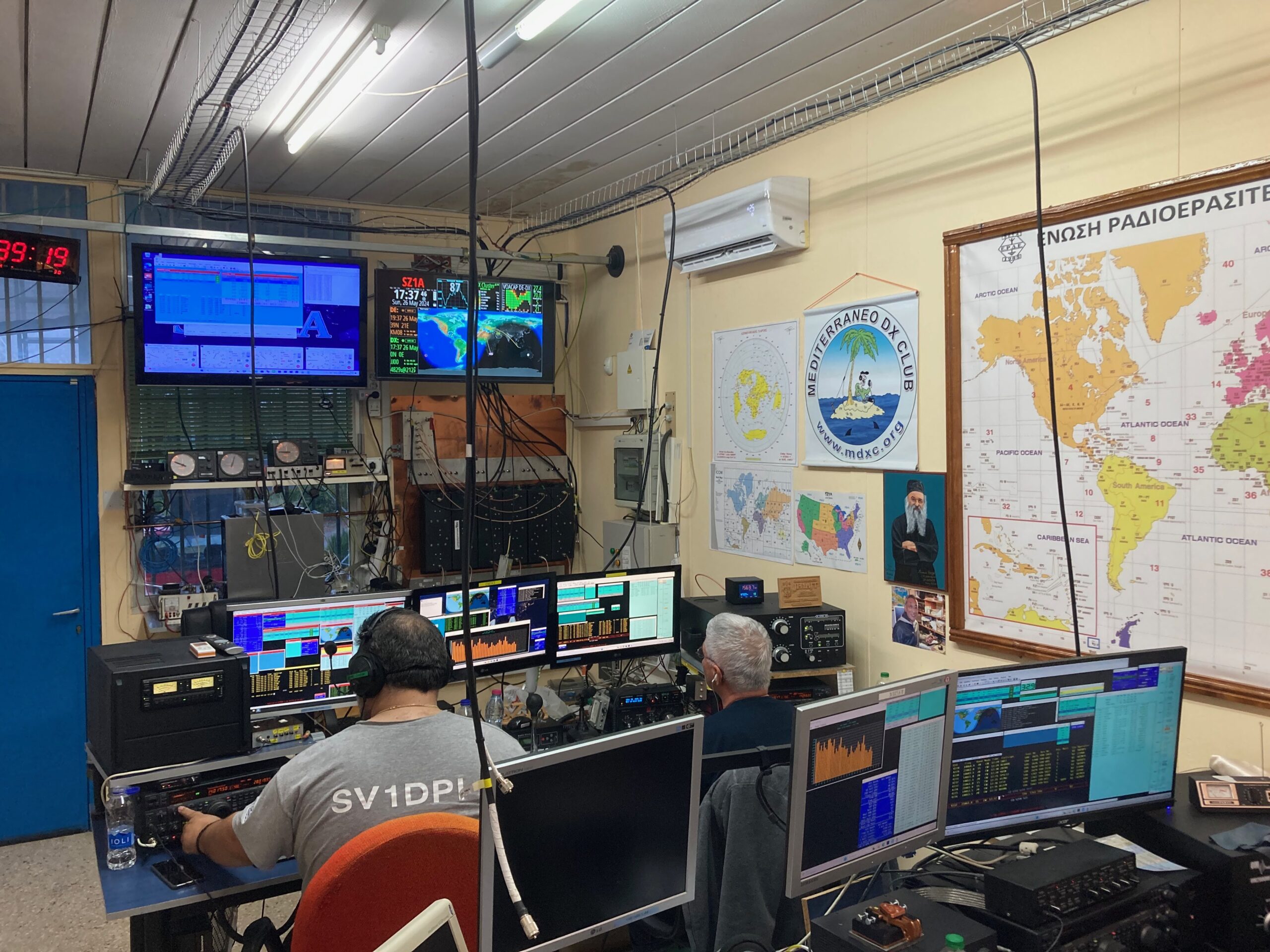
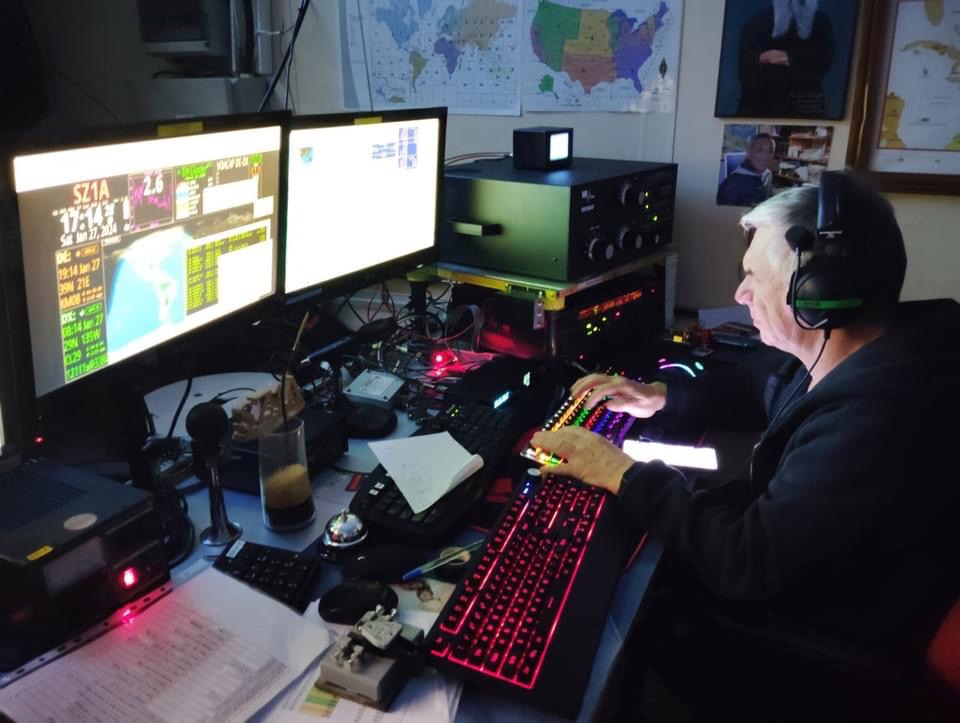
Throughout the entire contest, we monitored online scores, and we were consistently in first place worldwide in our category. The previous year’s winner, K3AJ from Maryland, followed chasing us with a noticeable gap, clearly aiming to defend his title.
About two hours before the end of the contest, our lead over K3AJ began to shrink. Sunday afternoon propagation toward North America was not as good as it had been on Saturday.
During the final minutes, he briefly overtook us in the online scoreboard, but after the log checking process we held on to the first place worldwide.
Throughout the entire contest, we monitored online scores, and we were consistently in first place worldwide in our category.
A single QSO with a station on the United States East Coast on the higher bands, such as 10, 15, or 20 meters, is worth about eleven to twelve thousand points. Since the final difference between us and the second-place station, K3AJ, was about forty-two thousand points, which equals at most four QSOs with East Coast stations, it becomes clear how important the S&P tactic is. You must constantly search for any station you can hear that is not yet in your log, especially when the run rate (ie, calling CQ) slows down or when propagation is not in your favor.
A Significant Victory and a Promise for the Future
After the organizers completed the log checking process, we secured First Place Worldwide in our category with 5,022,934 points, 1,018 QSOs, and an average distance per QSO of 4,963 kilometers.
Some might point out that our category had only five entries. However, if a single operator had produced the same result and competed in the much more competitive category of Single Operator, Single Radio, High Power, that score would have placed them third in the world and first in Europe out of a total of 234 participants.
The first place station in Europe for that category was DQ9Y, with 857 QSOs and 4,253,014 points.
After the organizers completed the log checking process, we secured First Place Worldwide in our category with 5,022,934 points, 1,018 QSOs, and an average distance per QSO of 4,963 kilometers.
To conclude, I would like to thank everyone who made contacts with us during the contest, as well as the Pizza Lovers 259 contest club for organizing this excellent event for ten consecutive years.
After reading about the club’s interests and activities on their website and noticing that we share many common interests, I would like to propose to the Board of the RAAWG (SZ1A) that we establish a sister-club relationship with PL259, provided they would also be interested.
Our next Radioteletype meeting on the air will be on Saturday, December 20, in the OK RTTY Contest.
73 to all,
Sotiris SV1BDO


